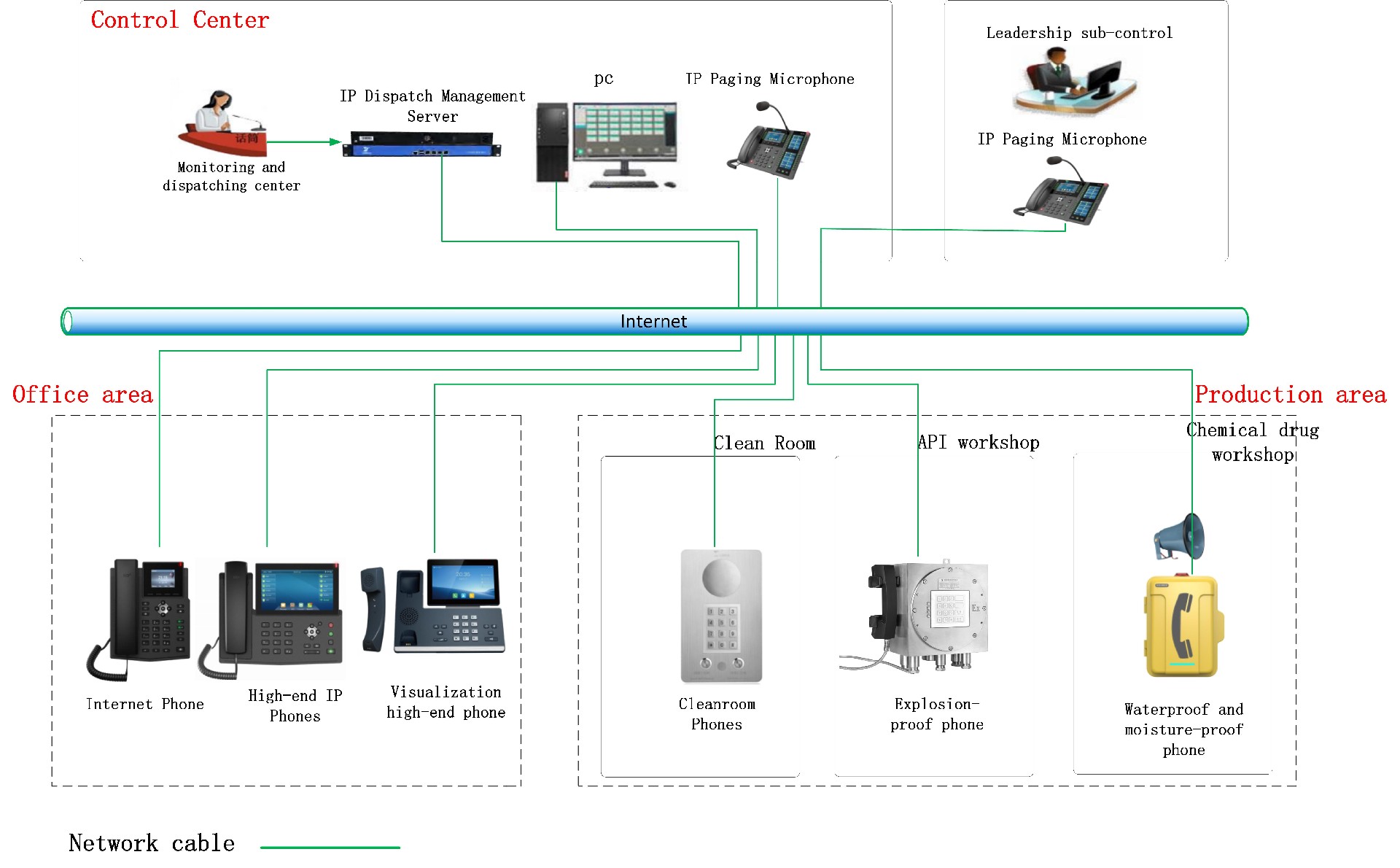2024-01-09 15:08:58
Dispatch telephone system

Pharmaceutical companies with fast production rhythm, complex processes, close connection between the upper and lower processes, production often need to contact with the relevant location, or deal with emergencies, or operational control, need to meet the high quality of communication, suitable for extremely harsh environmental conditions of the internal communication system.
1. System characteristics
1)Openness
The system takes the standard SIP protocol as the core and supports third-party equipment access and interconnection with the customer's existing IP communication system.
2)Business integration
A single system can support a variety of services such as voice help, video linkage, fire alarm, access control, etc., and through a unified console interface to complete monitoring and listening, business consulting, alarm and help.
3)Efficient Collaboration
By dividing multiple partitions and configuring multiple consoles, a single console can handle multiple service calls at the same time and support collaboration between consoles to enhance the service efficiency of the monitoring center.
4)High Definition Audio
The system supports the international standard G.722 wideband voice coding, combined with the unique echo cancellation technology, compared with the traditional PCMA coding, high-fidelity, high-definition sound quality.
2. System Functions
Expansion (call) function: the monitoring room or a station in the system can call any station in the system to implement point-to-point broadcasting calls and duplex calls;
Group expansion function: the monitoring room or a certain station in the system can call all the stations in the set partition to implement the partition broadcasting call, all the speakers of the stations in the called partition will give out the voice, and any station in the partition will take off the phone and answer the call, while the rest of the speakers will be disconnected and enter the 1-to-1 call;
Full Expansion Function: The monitoring room or a certain station in the system can play all the stations in the system to implement the full line broadcasting call; any station in the system will take off the phone and answer the call, and the rest of the speakers will be disconnected and enter into a 1-to-1 call;
All-area broadcasting: The monitoring room or a certain station in the system can initiate all the stations in the system to carry out voice broadcasting, text broadcasting and music IP broadcasting;
Multi-type broadcasting: the system supports three types of IP broadcasting: triggered, timed and instant;
Voice scheduling: the central control room section of the system through the dispatch console for all the stations to hang up, forced insertion, forced removal, listening, transfer, conference, call hold and recovery and other voice scheduling functions;
Priority management: the system needs to have priority management function, the broadcasting priority can be set, the high priority broadcasting can cut off the low priority broadcasting;
Unattended: when non-working hours, unattended number can be set to open the unattended function, all the call-in numbers to the central control room directly transferred to another designated number to achieve unattended;
Recording function: all voice intercom shouts in the system can be automatically recorded and stored in the converged business management platform, and can be queried, played and stored;